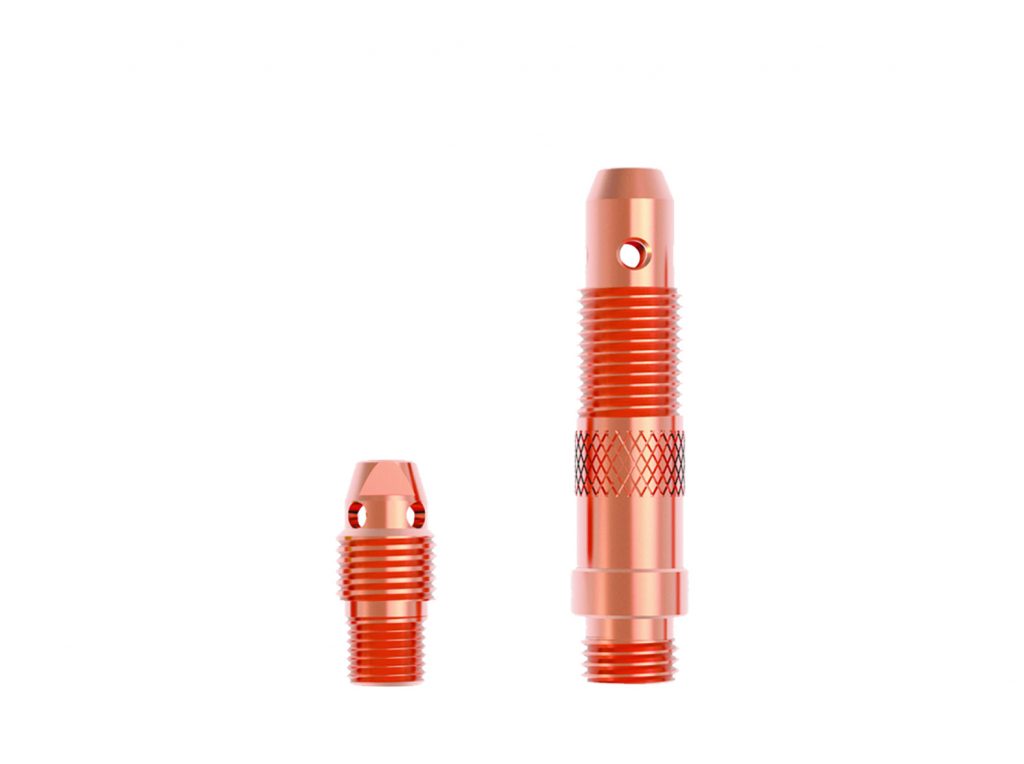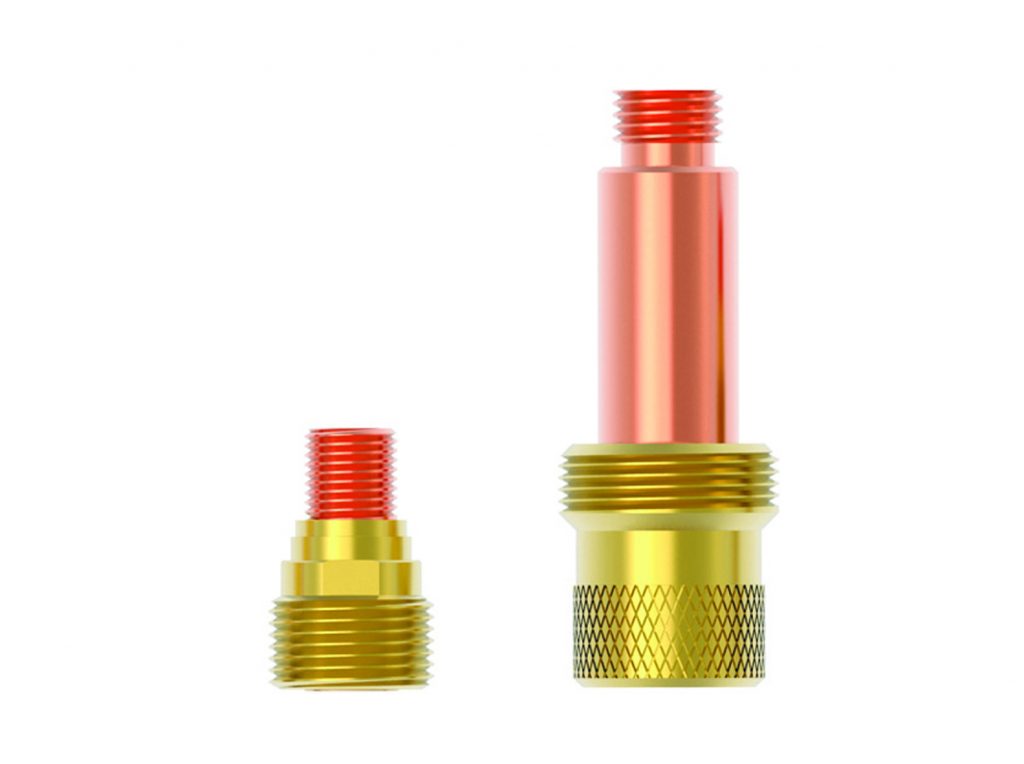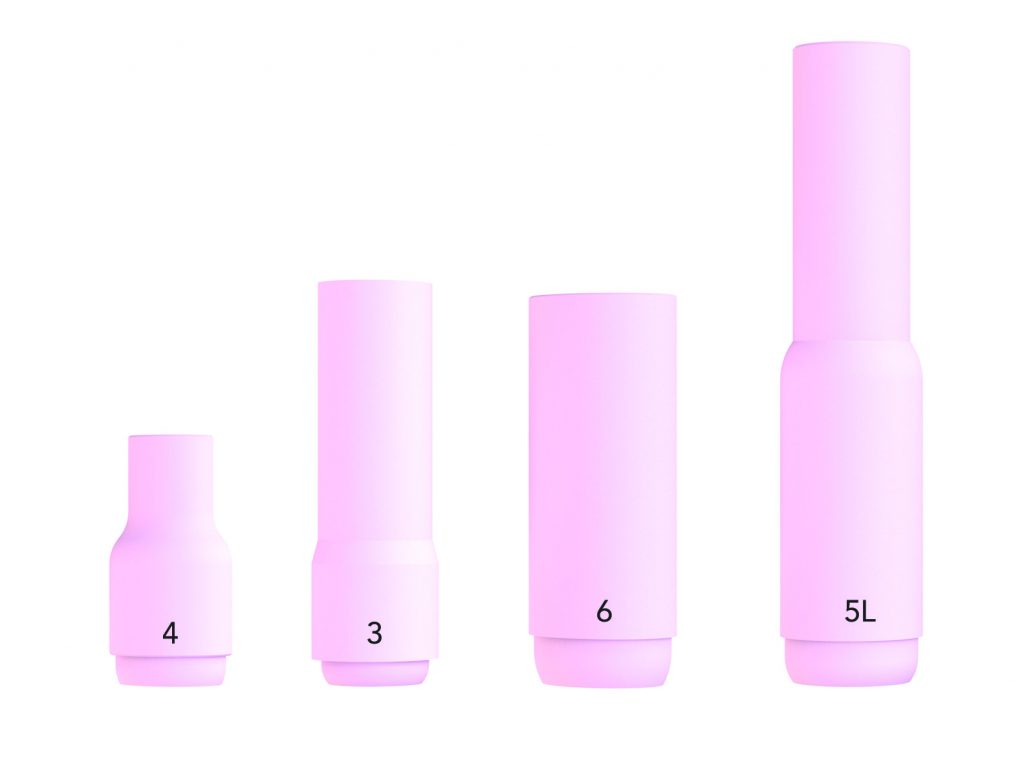Posted on Apr 4, 2022

How to select your Tig consumables
When faced with choosing TIG torch consumables, it can be confusing, particularly given the seemingly endless varieties and combinations. Should I use a collet body or gas lens body? What size consumables should I use? Lets break it down.
What’s the difference between a gas lens body and a collet body?

Collet bodies are the standard option on a Tig torch, and the one you’re likely to see in use most often. They allow you to produce a quality weld with a good gas coverage at a reasonable cost.
In comparison, gas lenses are typically more expensive, and need to be paired with specific gas lens ceramics, however they do offer benefits to justify the price.

Gas lens bodies give a superior gas shielding at lower gas flow rates by giving a smooth gas flow which is not affected by turbulence
If you’re welding metals such as stainless steel or titanium, using a Tig gas lens gives a more precise and stable gas flow, which really makes a difference in reducing the risks of contamination. On top of this, they allow more tungsten stick out due to the improved laminar flow, which also allows you to weld with the nozzle further away giving greater visibility of the weld pool. However they are not great for welding “dirtier” metals as they can become clogged up with spatter. In addition, they are wider than the standard collet body, which can make welding in tighter spaces difficult.
What size ceramic cup?

After selecting the size of cup that fits your chosen torch, (10N for SGT17, SGT18 and SGT26, 13N for SGT9 and SGT20) there are a range of different bore sizes available.
As a rough guide, the larger the cup, the better the gas coverage, so in theory bigger is better.
Depending on welding style, a larger size cup can also make “walking the cup” easier and faster. In reality though, the size of the joint to be welded may dictate what size cup is needed, and it’s more than possible to down size if you’re limited by space and/or access, as a smaller cup will give better visibility.
Another plus is that with a smaller cup you’ll use less gas, you just have to bear in mind that the gas coverage will be less. It is also important to be mindful of overheating, particularly when using smaller cups as there is less heat dissipation, as prolonged high amperage welding can cause the front of the cup to overheat and crack.
The wider gas coverage a large cup gives can also be necessary for the welding of certain materials. For example, titanium requires a large cup as it cannot tolerate oxidation of the weld pool. On the other hand, carbon steel is not so effected, and so a smaller cup can be used.
Overall though, there is no hard and fast rule on which size ceramic cup to use. It’s very much down to personal preference and Tig welding style, access to the weld joint, and the material in question.
The importance of your Tig consumables can often be overlooked when considering the overall welding set-up – after all they make up a small proportion of the total costs compared to the welding machine and torch, but as we’ve discussed, selecting the right consumable really does have an impact on weld performance and quality. However, whilst they are relatively inexpensive, the cost of replacing them soon adds up! That’s why Parkertorchology Tig consumables are manufactured to the same specifications as the original equipment manufacturer, ensuring reliability, longevity and superior performance.
For more information on our Tig consumables, view the Suregrip One Tig catalogue.